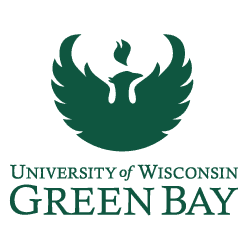As the Sustainability Coordinator for campus, I wanted to respond to student concerns regarding the tree removal and land grading activities currently underway on the three acre tract of land between the Union and Residential Life. First, thanks for caring and being interested in environmental sustainability – apathy and unwillingness to consider changing lifestyle habits are some of the biggest hurdles we face in becoming a more sustainable culture. So, thanks for voicing your concerns!
Next, info on the multi-purpose use area. Yep, it’s a shock to see the clearing of the area, that’s for sure. But there was much discussion on environmental impact of this project and how to do the project with the least long-term impact on sustainability over the two to three years this project was under consideration. I joined the Multi-purpose Use Committee last Spring which already had four other campus Sustainability Committee members participating, including student representatives, so sustainability was always an important consideration on this project.
Some of the items we considered/discussed both on the Sustainability Committee and the Multi-Purpose Use Committee included:
- Species mix on the area – was there anything unique or rare to be aware of? Members of the Cofrin Center for Biodiversity walked through the area to evaluate the ‘quality’ of the area and determined it was a typical mix of what you find when you allow a farm field to go ‘natural’, being colonized by the typical plants – both invasives and naturally occurring. Nothing unique that would be displaced. In fact, this area was the dump field for the soil removed in constructing the University Union. The ‘best’ trees (health and species) in the multi-purpose area were marked and saved. We’re really lucky on our campus to have so much already ‘green’ property with 300+ acres of high quality natural ecosystems in the Cofrin Arboretum, plus other native, non-mowed areas in the remaining 300 acres that makes up the rest of campus & housing. Not to lessen the impact of the 3 acres currently being re-purposed, but it certainly was a consideration in whether we could let this area be used in a different way.
- What about carbon sequestration? If we cut down trees, we lose their ability to sequester carbon, how do we account for that loss? We looked at other areas on campus where we could do a ‘land swap’, but there are no other intact 3 acre tracts in one chunk that would be suitable, and the ‘bang for the buck’ of carbon sequestration was low on helping lower our overall campus carbon footprint. There are many more actions each one of us can take on campus to lower that footprint – but they involve behavior change, like using Zimride and carpooling with someone once a week (for example). In addition, new plantings will be going into this space – both native trees and plant species – that will help mitigate the loss and actually potentially increase the biodiversity of the area (depending on the number/types of plants going in).
- Trying to find the balance point: Student/Res Life saw the importance of reusing this area as an outdoor meeting place for students to gather, have events/programs, participate in various sports/outdoor activities, and generally enjoy being outdoors. As a Sustainability Committee, we do want to do what’s best for the environment but we also have a responsibility to make sure you and all future students have an opportunity to actively engage in community building activities outside the classroom or dorm/apartment, and literally in this case, outside! Given the scrubby and ‘non-special’ nature of this 3 acres, the lack of other suitable areas on campus close to academic and residential buildings for repurposing for student outdoor space, the plan to incorporate new native species plantings including tress, and the other 300+ acres of high quality natural habitat on campus, we agreed to support this project.
Also, I encourage you to get involved in student organizations like PEAC or SLO or the SGA Environmental Affairs committee – all these orgs are actively involved in environmental and sustainability efforts on campus and certainly welcome new members.





